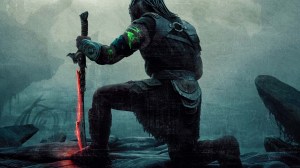Everyone has their own favorite memories about the Star Wars saga and all of those memories are well-deserved. Whether it be the heroic characters like Luke Skywalker or Leia Organa, the terrifying villains like Darth Vader or Emperor Palpatine, or the overall exploration of the conflicts between good and evil, there’s a good reason why the series has earned such a passionate following from audiences of all ages over the past 40 years. While there are countless iconic elements of the franchise, few hold a candle to the sequence that takes place in the Mos Eisley Cantina, which proved just how much George Lucas was able to accomplish with so little.
Videos by ComicBook.com
Star Wars: A New Hope takes 45 minutes to get to the iconic locale, as the film up to that point explores what happens to a farm boy after encountering droids with a connection to the Rebel Alliance. This fateful encounter leaves him without a family and seeking a new destiny in life, which kicks off in the wretched hive of scum and villainy known as “Mos Eisley.”
The sequence itself, which lasts nearly seven minutes, doesn’t immediately inform the audience of how everything about the story will change by the scene’s conclusion, but every subsequent viewing reminds you of the power of the sequence. From a narrative standpoint, the scene is symbolic of Luke leaving his past life behind and his last experience on Tatooine before starting his mission to rescue Leia, offering him his first taste of alien worlds and being in over his head. These encounters also offer audiences a chance to see Obi-Wan Kenobi, previously being seen as a “crazy old wizard,” stepping in to use his lightsaber to deescalate a situation that could have proven deadly.
Mos Eisley also introduces the audience, and Luke, to Han Solo and Chewbacca, with the smugglers making it quite clear where their allegiances lay. By the time the film’s conclusion rolls around, we see how their priorities have evolved, but had they not made them so clear early on, their emotional arcs wouldn’t have held as much resonance.
Speaking of Solo, our time in the Cantina gives us an encounter that would help define who he was for the rest of the franchise. When pushed by Rodian bounty hunter Greedo, Solo attempts to talk his way out of the situation, only to instead take Greedo by surprise and kill him unexpectedly. Even with the subsequent updates to the sequence, the end result is the same: Solo is pushed into a situation where it’s either him or the other guy, and the smuggler won’t let anything stand in his way. As opposed to Luke, who we had just seen fail to stand up to intimidation, Solo was almost the exact opposite, refusing to let anyone threaten his livelihood.
From a production standpoint, the Cantina scene establishes in less than 10 minutes the diversity of the galaxy far, far away and the truly alien nature of the franchise. While the low lighting conditions adds mystique to the scene, it was more inspired by Lucas’ apprehension about depicting these various characters in sufficient lighting conditions. Keeping characters in the dark prevented audiences from noticing how many aliens’ costumes were falling apart, with the sequence’s editing also helping mask its production setbacks all while adding allure to characters who may have only earned seconds of screen time. Even though we knew nothing of these ancillary characters, their appearances conjured all sorts of backstories in our minds, allowing us to flesh out countless adventures within this world in just a matter of moments.
Various elements of the original Star Wars have inspired all subsequent sci-fi adventures, while the Cantina scene transcends genres with what it accomplishes. The “Cantina Scene” has become shorthand for any gathering of seedy and diverse characters who only occupy the screen for a few moments, forcing the audience to concoct their backstories. The concept isn’t merely utilized by the sci-fi or fantasy genres, but for anyone to describe a setting as a “Cantina Scene,” you know exactly the type of scum and villainy they are referring to.
The seven minutes we spend in the Mos Eisley Cantina might not be the most exciting or dramatic minutes over the course of the entire franchise, but those minutes manage to accomplish so much of what every sci-fi film often takes an entire film to establish, evoking a sense of wonder and apprehension about the storytelling possibilities of these worlds. Star Wars: The Rise of Skywalker might be set to conclude the Skywalker Saga, but thanks to the Cantina Scene, we know that there is an endless amount of stories that can be told in the world of Star Wars.
Star Wars: The Rise of Skywalker lands in theaters on December 20th.

Welcome to Star Wars Week! ComicBook.com is celebrating the release of Star Wars: The Rise of Skywalker all week long with an in-depth look at the last four decades spent in the galaxy. Click on the banner to see more of our exclusive coverage and videos celebrating all things Star Wars!









